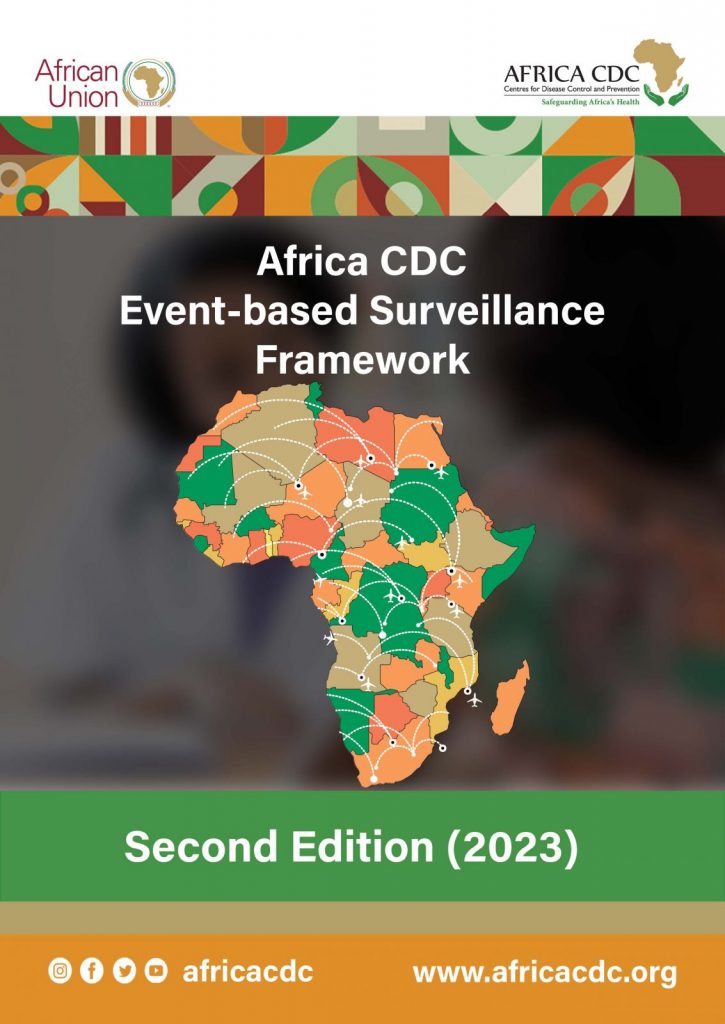Acknowledgements
The Africa Centres for Disease Control and Prevention (Africa CDC) would like to thank all the contributors whose efforts helped to create and develop both the original and this revised version of the Africa CDC Event-based Surveillance Framework. The technical working group that contributed to the production of this revised version was led by Africa CDC and included representatives from the following entities:
• African Union Member States implementing event-based surveillance
• Africa CDC Regional Coordinating Centres
• World Health Organization
• World Organisation for Animal Health
• Food and Agricultural Organization of the United Nations
• Non-governmental organisations including Resolve to Save Lives
• Technical partners, European Centre for Disease Prevention and Control and US Centers for Disease Control
The extensive list of contributors is listed on the following page. The production of the document was funded by Africa CDC.
| File | Action |
|---|---|
| Africa CDC Event-Based Surveillance Training Manual – Arabic | Download |
| Africa CDC Event-Based Surveillance Framework – Arabic | Download |
| Africa CDC Event-Based Surveillance Training Manual – English | Download |
| Africa CDC Event-Based Surveillance Framework – English | Download |
| Africa CDC Event-Based Surveillance Training Manual – French | Download |
| Africa CDC Event-Based Surveillance Framework – French | Download |
| Africa CDC Event-Based Surveillance Training Manual – Portuguese | Download |
| Africa CDC Event-Based Surveillance Framework – Portuguese | Download |
